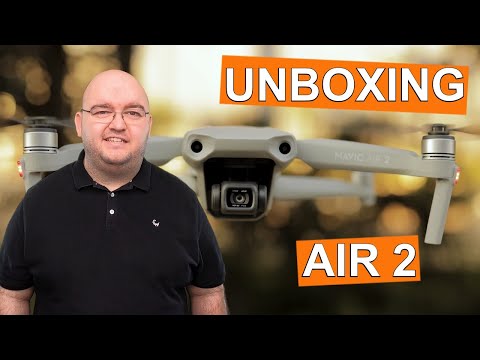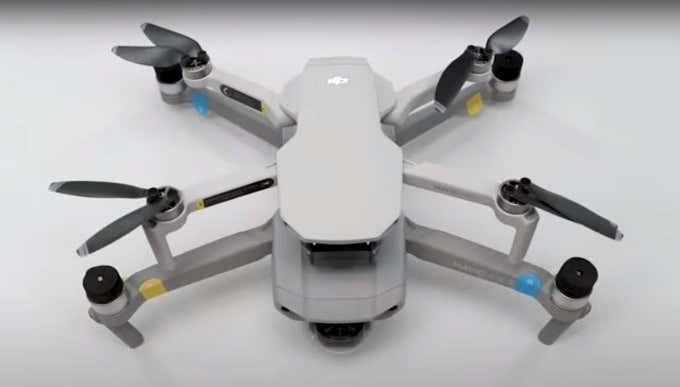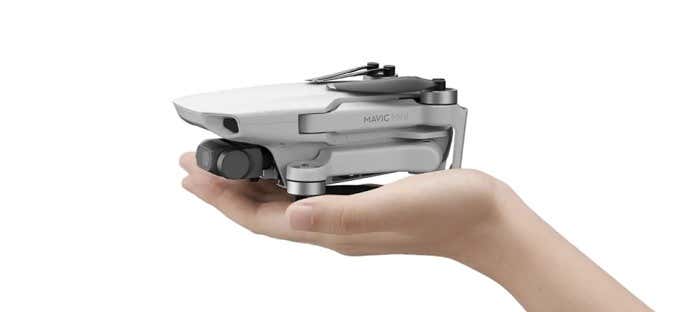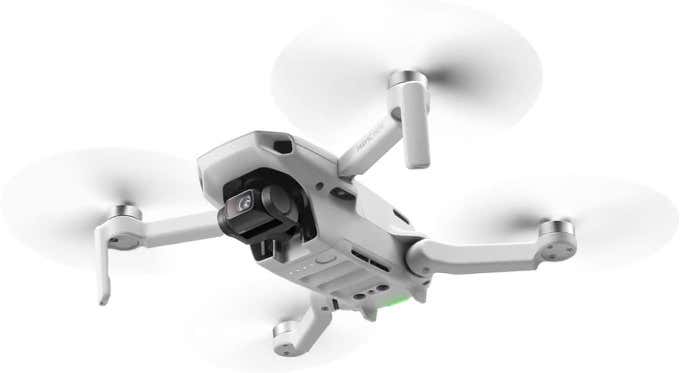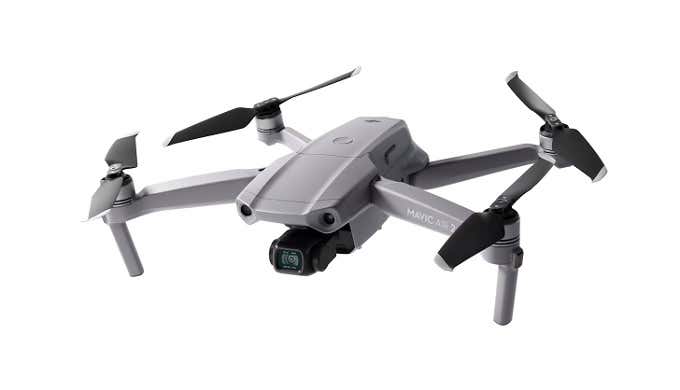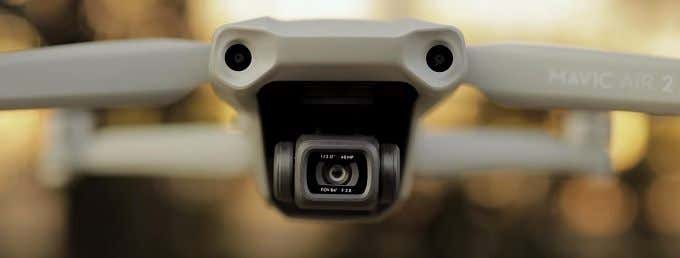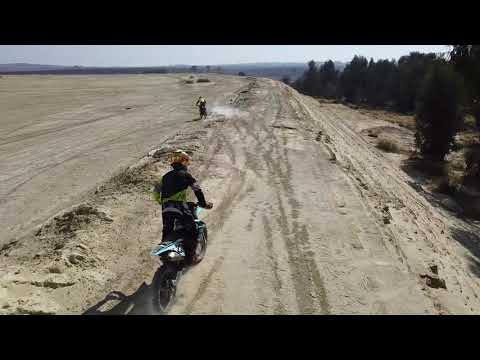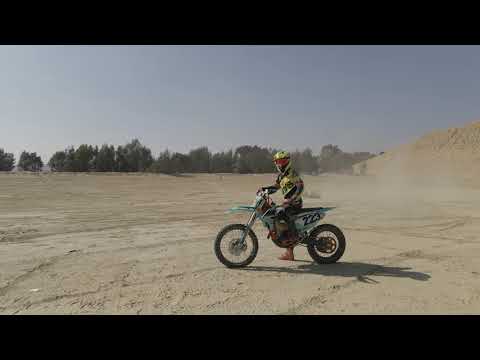When it comes to the Mavic Mini vs the Mavic Air 2 choice, however, there’s quite a lot at stake. Each of these drones has its own important pros and cons. We took out both machines to the sunny outdoors and filmed a few off-road motorcyclists doing their thing. After putting these fantastic flyers through their paces, we’ve got a good idea of which type of user each drone is for.
The Big Deal: Price
Let’s not beat around the bush. There’s a huge price difference between the Mavic Mini vs Mavic Air 2. You can buy two Mavic Minis for the price of a single Mavic Air 2. So a big part of the decision is whether the extra cost is justified by the extra features. In either case, we strongly recommend that you purchase the “Fly More Combo” versions of each drone. The accessories included with these combos are essential and buying them separately later is much more expensive than opting for the combo immediately.
Sizing Up The Competition
The Mavic Air 2 is by no means a large drone, but compared to the Mavic Mini it’s gargantuan. Have a look at this size comparison taken from our Mavic Air 2 unboxing video. If you get the Air 2’s nifty carry bag, it’s hardly a chore to get it around, but the Mini is small enough that you can throw it inside your existing bag. Consequently, the Mini is a drone that you can always have with you, while the Air 2 is a drone you need to specially pack for the occasion. There’s a saying that the best camera is the one you have with you, and so the Mini has a serious advantage here.
The Mavic Mini: Pros And Cons
While you might think the Air 2, if money were no object, would always beat the Mini, you’d be wrong. The Mini has quite a lot going for it in its own right. The first and “biggest” advantage it has is weight. There’s a reason DJI have so prominently pasted “249g” to the side of their drone. In most countries with drone regulations, drones that weight 250g or less are exempt from most if not all licensing requirements. This weight was chosen to exclude the millions of small toy-class drones from onerous licencing needs. However, DJI has thumbed their nose at this and managed to squeeze high-end drone technology into that weight limit. Time will tell if there’s widespread changes in the law, but for now Mini pilots don’t have to worry about paperwork or costly certification. You still need to fly your drone in accordance with the law though. Another major advantage of the Mavic Mini is the ability to charge it on the go from USB sources. Though other larger DJI drones have USB ports, they can’t charge their batteries from it. With the Mavic you can use a car charger or power bank, as long as it’s outputting 24W or less. Comparatively, the Mavic Mini has several weaknesses compared to the Air 2. For one thing, it doesn’t have any flight avoidance sensors, apart from downward sensing landing sensors. So you don’t have any sort of safety net to prevent you from flying into things. From a camera drone perspective, the biggest con of the Mini is its 2.7K camera. That is however a matter of perspective, if you’re looking at making 1080p content, 2.7K gives plenty of leeway. If you absolutely must have a 4K camera, it’s a non-starter from the outset. The last major disadvantage worth mentioning is the use of WiFi as its transmission system. Unlike DJI’s in-house Ocusync technology, WiFi is prone to interference and signal loss. This makes it a poor choice for situations where you only have one chance to film something, such as an action shot.
The Mavic Air 2: The Pros & Cons
The Mavic Air 2 is a drone that got plenty of people excited. It’s a much less expensive machine than the class-leading Mavic 2 models, but really isn’t that far off in terms of features. In fact, in some ways the Air 2 is better, such as its ability to film 4K video at 60 frames per second. The camera is therefore a serious step up from the Mini and, when compared to Mavic 2 footage side-by-side, the differences are only evident to the real pros. The other major pro of the Air 2 is just how well equipped it is to fly. Its 68 kph top speed is much faster than the Mini’s 46.8 kph. It can resist wind speeds that are far more ferocious and it has both front and rear obstacle avoidance sensors in addition to the bottom landing sensor feature it shared with the Mini (and every other modern DJI drone). It also uses Ocusync, which has virtually flawless connectivity. The main cons include the fact you need a special battery charger and it’s not quite portable enough to throw in your bag or always keep with you.
Camera & Flight Performance
We took our Mavic Mini and Air 2 out to a remote mine dump, a place where off-road motorcyclists like to spend their time throwing up plumes of dust and dirt as they race across the flats. It’s hot and mildly windy and we did our best to film these guys doing their thing on the sands. The film quality from both drones was excellent. However, you’re stuck with a preset color profile with the Mini, which means your color-grading options are limited. The Air 2 on the other hand offers a flat color profile, so you can really tailor the footage to your needs. The Mini also struggled to keep up with our subjects, but the Air 2 zoomed around like it owned the skies. If you want to film fast-moving objects the Mini really isn’t the tool for the job. One place the Mini did excel was in flight endurance. Though both drones have a stated flight time of around 30 minutes, the Mini’s batteries were charging in the car while we flew. So we have more full charges for it! Sadly, we also had signal loss on the Mini, while the Air 2 was rock-solid. Here’s a selection of clips from the Mavic Mini, shot at its 2.74K maximum and then upscaled to 4K. Finally, here we have clips from the Air 2 of the same event. These are native 4K clips.
Final Verdict: Which Drone Is For You?
So after spending quite a lot of time with both machines, here’s what we have to say about these two excellent drones. The Mavic Air 2:
Is the drone to buy for most people.But it requires licencing in many countries.Still, it’s good enough for professional use.
The Mavic Mini:
Doesn’t require special licencing (yet).Is truly portable and can charge from USB.Takes amazing footage that’s not quite pro-level (but you can make it work).Suffers from signal problems thanks to WiFi.
So, if you want the best all-around drone on the market today that can do just about any job and take excellent footage, the Air 2 is unbeatable at the price. If you want a drone for filming beautiful scenes or (relatively) low speed action that you can always have with you, charge anywhere and don’t need any paperwork or government approval then the Mavic Mini is the best deal today.

